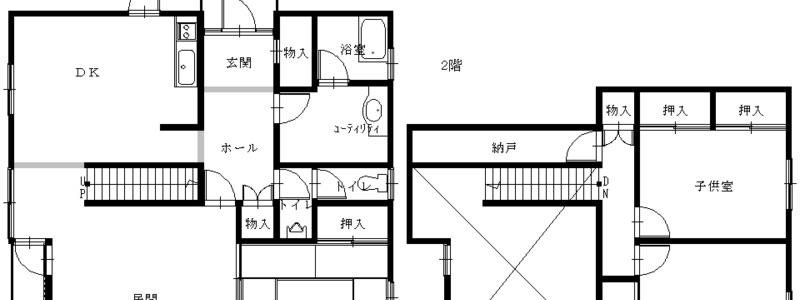Table of Contents
Japanese Mansion and Apāto
The most common forms of housing in Japan are mansions and apāto.
A mansion (マンション) is typically a concrete apartment/condominium complex of three or more floors. Buildings with at least five floors usually have elevators, and more modern buildings often have a main entrance with auto-lock doors. Apartments range from one-room studios to properties with three or more bedrooms, and may encompass more than one floor.
An apāto (アパート) (from the English word “apartment”) is the Japanese term for a two-storey apartment building, usually made of wood and iron. Each housing unit is generally small, and many apāto use an elevated mezzanine or “loft” as sleeping space. Because the structure is wooden, insulation and soundproofing tend to be poorer than mansion apartments.
If you live in an Apāto or a Mansion, there are some points you should be careful about. For example, loud TV/stereo or voice, parties, use of musical instruments, banging the doors, and showers or laundry late at night can all be considered noise that may lead to troubles with your neighbors.
Houses
Detached houses are the most common type of family home. They are particularly common in the suburbs, smaller towns and cities and the countryside, but can be found in central locations as well. Renting a house may give you more freedom with pets, and also allow you to enjoy activities such as gardening if the property includes a backyard. Though tatami flooring is available in some mansion and apāto properties, they tend to be more common in houses, for those who would like to experience a more Japanese living environment.
Real Estate Terms
Below is a table of commonly used abbreviations and terms used in the real estate business in Japan. Floor plans are written using numbers and alphabets, where the number indicates the number of bedrooms and the letters show the which other areas the property comprises.
| L | Living room | Over 8 Jo (approx. 13m²) |
| D | Dining room | Over 5 Jo (approx. 8m²) |
| K | Kitchen | About 4 Jo (approx. 6.5m²) |
| DK | Dining-kitchen | 1 room between 8-14.5m² |
| LDK | Living-dining-kitchen | 1 room over 14.5m² |
| 1R ワンルーム |
Studio Apartment | |
| S | Storage Room | |
| 和室(和) | Japanese style | Tatami floor |
| 洋室(洋) | Western style | Wooden or carpeted floor |
| ロフト | Loft | Loft |
| ベランダ/バルコニー | Veranda/Balcony | Balcony |
As an example, a 3LDK housing unit will have 3 bedrooms, and 1 living-dining-kitchen room. The sizes of each room are usually shown on the floor plan, either using the Japanese unit “Jo” which is equivalent to the size of 1 tatami mat (1.6m²). The style of the room is usually also written to show whether the room has a tatami floor or a wooden floor.
Traditional Japanese-style rooms will have an oshiire (押し入れ, deep closet with sliding doors) where futon bedding is stored. These can be converted easily into Western-style closets for storing clothes by using temporary bars and shelving units.
Most properties have a balcony for drying laundry and in some cases the washing machine is also found here. Small apartments without a balcony will often have a rack outside the window on which clothes can be hung to dry.
General Information
Bathrooms / Toilets
Japanese bathrooms are broadly divided into two types – those where the toilet and bathtub are in the same room, and those that are separated. The former type, known as yunitto basu (ユニットバス, unit bathrooms) generally fit the bathtub, toilet seat and sink into a compact, square room with the tap shared by the bath and sink. Most Japanese people wash using the shower (often sitting on a stool) and use the ofuro (お風呂, bathtub) for soaking only.
Larger properties will often have the toilet in a small, separate room. Many Japanese people use special toilet slippers that do not leave this room. There are two types of toilets in Japan, washiki toire (和式トイレ, traditional squat toilets) found in some older buildings and public restrooms, and youshiki toire (洋式トイレ, Western-style toilets and urinals). The handle on the most basic toilets will have two flush options for smaller (小) or larger (大) water volume, and include a faucet above the tank to reuse hand-washing water for flushing. High-tech toilets called “washlets” include a separate panel of buttons to customize a variety of toilet features such as a heated seat, bidet functions, and “courtesy noise” to prevent others from hearing unpleasant sounds.
The washstand may be in a separate room, adjacent to the toilet and bathroom. Whether the toilet is separate or not, the bathroom is usually waterproof, with the floor designed so that all water flows towards the drains. Some modern bathrooms have a heating function in addition to the extractor fan, designed both to dry off the bathroom after use to prevent mold and for drying laundry. There may also be a function to automatically fill the bathtub to the desired level at a designated temperature, or to maintain the temperature of the water in the tub.
Heating / Cooling
Most Japanese residential buildings do not have central heating, and are very cold in the winter. Air-con (エアコン, Air conditioning units), however, have modes for both cooling and heating. Electrical space heaters and standing fans can be used to cover areas where there is no air-conditioning. In winter some people sit with their legs under a kotatsu (こたつ, a Japanese heated coffee table) for warmth. The kotatsu comprises a table base with a small heater on the underside, with a removable blanket and table top. The heater does not produce enough heat to warm the whole room, but the blanket keeps the heat inside.
See also: our featured article “Kotatsu: A Traditional Way to Stay Warm and Save Energy.”Moving Out
When you move out from a room, unless otherwise stated by the real estate agency, you are responsible for restoring and cleaning the house to the condition it was in when you first rented it. Irremovable stains, scratches, tears, burn marks etc may incur fines from the agency. It is best to check with your real estate agent in advance about the points to note. When you have had your own accounts for utilities, these should be closed and the bills settled up to your final day. Unpaid utilities fees may prevent the return of your deposit.
See also: our “Moving” section.




